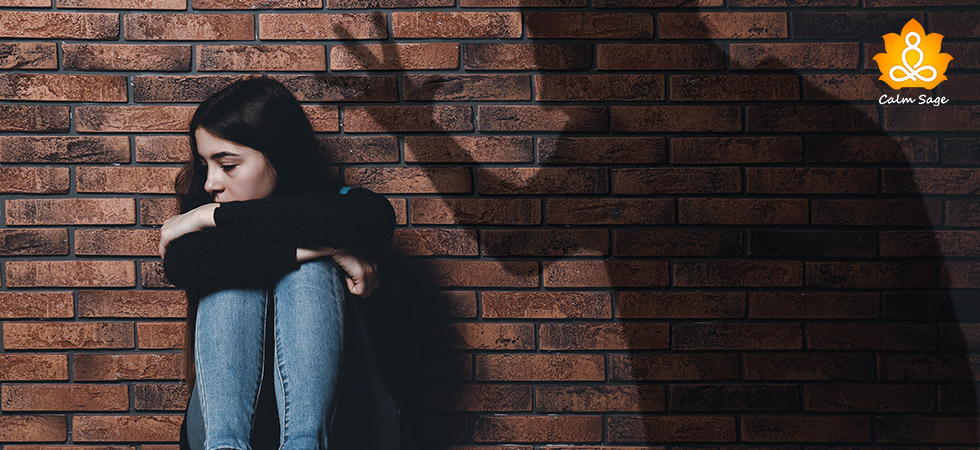The Cycle Of Abuse: Its 4 Stages And How To Break The Cycle

One of the greatest trauma to heal from is abuse. Abuse is any action that intends to hurt others or wield dominance over others. While often subtle and hidden, abuse can leave wounds too deep to heal. Even though it does not happen frequently, abusive actions in relationships can undergo a cycle of abuse that can leave the actions even more confusing and hurtful.
Abusive relationships are not the same for everyone. Like all trauma experiences vary from person to person, abuse experiences can too.
The cycle of abuse consists of four stages or patterns and understanding these 4 stages in the cycle of abuse wheel can help you recognize the pattern of abuse and break free from them.
In this blog, we’ll be exploring what is the cycle of abuse, the four stages, and how you can break the cycle of abuse.
What’s The Cycle Of Abuse?
The concept, first introduced in the 1970s by psychologist Lenore Walker, can be described as power imbalance in the relationship, where one person uses abuse or abusive actions to wield dominance over the other and control the other person. This action can occur in a romantic relationship, friendships, or even a parent-child relationship.
It can be hard to identify abuse unless you’re a victim. However, here are some signs that can help you identify abuse or abusive behaviors in a relationship:
- Injuries or visible bruises
- Untreated or unexplained injuries
- Unexpected changes in behavior
- One partner controlling the actions of another
- Feeling emotionally upset or agitated
- Feeling withdrawn from loved ones
If you are being abused or fear that your loved one is being abused or are a victim, you can connect with these helpline numbers for help:
- National Domestic Violence Hotline – 1-800-799−7233
- SAMHSA Helpline – 1-800-622-4357
- National Sexual Assault Hotline – 1-800-656-4673
Let’s understand the four stages of the cycle of abuse.
The 4 Stages In The Cycle Of Abuse
The four stages in the cycle of abuse are:
- Tension Building
- Incident Of Abuse
- Reconciliation
- Calm
These stages have been used as a reference for mental health professionals but aren’t comprehensive to use in all abusive incidents. These stages may not be the same for all experiences and might not even occur chronologically.
Let’s understand them:
1. Tension Building
During this first stage, the abuser may show signs of abuse and hurtful actions that gradually increase with time. This can be connected with external stressors such as work stress, financial stress, etc. During this stage in the cycle of abuse, the actions can include:
- Having frequent emotional outbursts
- Being irritable
- Showing impatience
- Experiencing shortness of temper
Here, when the external factors make the person, the abuser, feel out of control, they may turn their frustrations inwards, hurting their partner in the process to feel in control again. When this tension builds, the victim of the abuse may also feel gradual anxiety and may cause actions to appease their angry partner to prevent the next stage – the incident of abuse.
2. Incident Of Abuse
When the tension from the first stage in the cycle of abuse breaks, this may cause an incident. During the second stage, the abuser will overtly reinstate their power and dominance over the victim. This incident of abuse can vary from relationship to relationship but can still include signs such as:
- Intimidation
- Physical threats of abuse
- Being violent
- Calling insults or using other kinds of verbal abuse
- Sexual abuse
- Shaming and blaming the victim
- Using silent treatment or other manipulation tactics
- Social withdrawal
- Lack of emotional intimacy
This stage may likely increase its intensity with every cycle. For instance, manipulation and humiliation may be involved in the first cycle and a few after that but then they may transition into physical threats in the later cycles of abuse.
3. Reconciliation
During the third stage in the cycle of abuse, the abuser may believe that the tension from the first stage is now disappearing but this stage can be an opposite experience for the victim. Once the tension is gone, the abuser may apologize for their action to the victim and will try to amend their actions by showering their partner with affection.
During this stage in the abusive cycle, the abuser may feel ashamed of their actions towards the other person and might be committed to righting the wrongs. And you, as a victim, may also feel inclined to forgive them and give them the benefit of the doubt.
This reconciliation stage may even include affectionate actions that may appease you and bring the relationship back to normal.
4. Calm
The final stage in the cycle of abuse is Calm. During this stage in the abusive cycle, the partner or the abuser will stay attentive and affectionate but you, the victim, might notice a subtle change in their actions. From being sorry for their actions, you’ll notice that now they make excuses for their actions.
Here, the abusive actions are minimized and the victim may notice that the abuser switches the responsibility for the abuse, will try to justify their abusive actions, and might use gaslighting tactics to shift attention.
You might notice that there’s something wrong but won’t be able to put a finger on it. After some time, the cycle of abuse will begin again.
How To Break The Cycle Of Abuse?
Breaking the cycle of abuse is not easy. You can’t always walk out of it. It’s OK to feel scared for your safety and that of your loved ones. However, there are ways where you can end or at least break free from the cycle of abuse:
1. Speak To A Trusted Loved One
If you are experiencing abuse or abusive actions, then speak to a trusted loved one. This person should be someone you can completely trust to share your experiences. They will help you see the pattern of abuse and can also help you find a safe space before the stages escalate.
2. Seek Professional Help
A mental health professional can help you identify the patterns of abuse too. They can help you move through the challenges you face and can support you in building new behavioral patterns and coping skills. If you are in an abusive relationship, then a professional can help you come up with an exit plan or resources you or your partner can seek.
3. Work On Yourself
You are your number one priority, never forget that. You deserve a healthy and loving relationship. While you may believe otherwise, remember that no one can exert control over you or your decisions. If you’re experiencing low self-confidence, here are some tips to help you:
- Try to participate in activities that bring you joy and make you feel confident
- Consider connecting with a support system
- Consider seeking professional help and support
- Try to engage in relaxation activities to gain mental clarity and peace
4. Avoid Blaming Yourself
You are not responsible for others’ actions. Just because you’ve been abused or subjected to abusive actions does not mean that you are to blame. You deserve a loving relationship, care, and respect. If you find yourself blaming yourself, stop! It’s not your fault!
5. Create An Exit Plan
If you are contemplating walking away from the relationship, then you need to consider finding a safe place. A mental health counselor can help you come up with a safe exit plan if you believe that the actions of your partner are turning into abuse. Having an exit plan can make it easier to consider walking away from the abusive relationship.
Not all abusive relationships follow the same pattern, however, many of them may involve the four stages in the cycle of abuse. Sometimes, abuse is visible while other times, it can be subtle and hidden. Abuse, of any type, is not OK and there are ways to end the cycle of abuse, no matter how hard it can be.
Remember, you are not alone and help is always available!
You can write to us at info@calmsage.com or DM us on social media or you can also connect with any of the above-mentioned helpline numbers. We’re here to help! I hope this article helped you understand what the cycle of abuse is and its 4 stages.
Have anything to add? Share it in the comments below.
Take Care and Stay Safe!




















